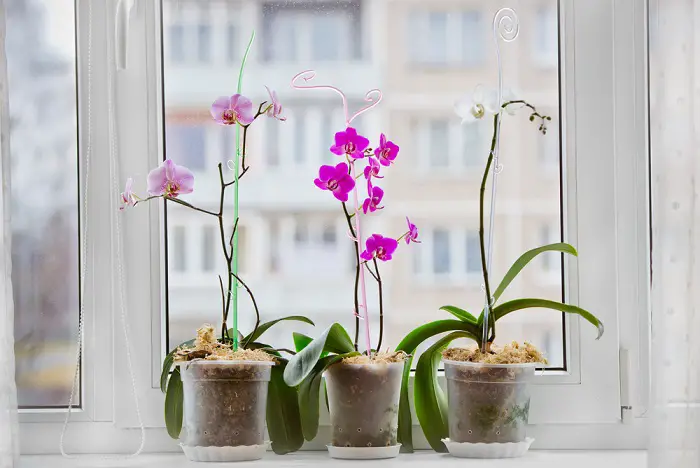My beautiful orchids once entered dormancy, and I wouldn’t stop wondering if there was a way to rebloom them. I took the task of research and find ways on how to rebloom orchids.
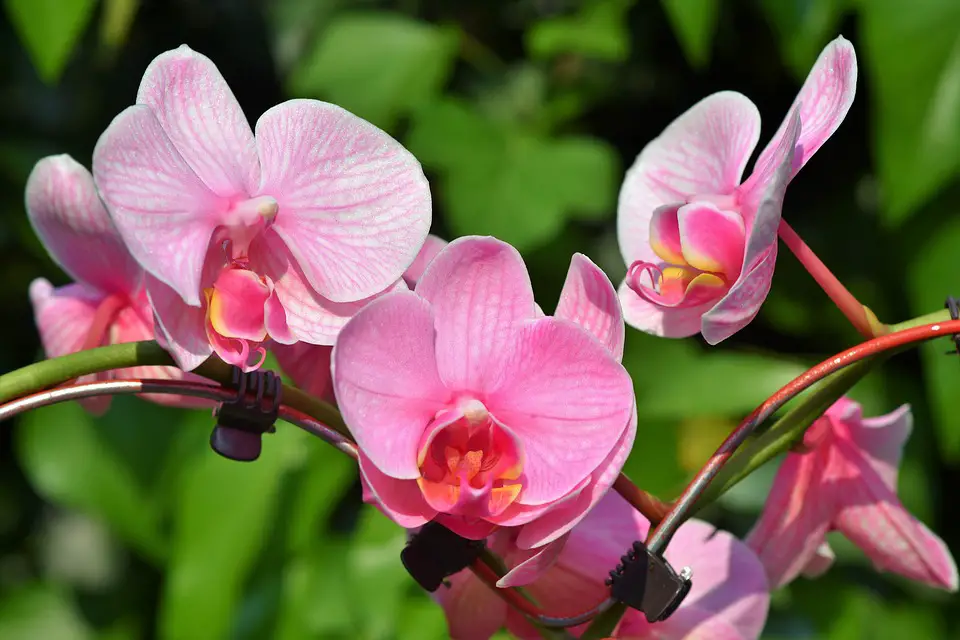
So how are orchids rebloomed? Orchids require extra care during dormancy for them to rebloom. These include: fertilizing them with a balanced fertilizer (20-20-20), moving them to a cooler area with temperatures between 55 and 65 degrees Fahrenheit, ensuring the orchid has indirect sunlight always, and supporting the new spike once it emerges and starts growing.
Most beginners find it frustrating to rebloom orchids. This is because orchids are very different from other plants or species. They require more care and specific growth conditions. Reblooming orchid is a tedious process that requires patience and technical know-how to achieve success. It would help if you understood the basic care tips for an orchid plant and the signs that suggest what the plant lacks. Let’s take this journey together to reblooming your orchids.
How to Care for Your Orchid
Orchids are the most commonly-grown flowers. There are many varieties of orchids, with the common being: Cattleya, Dendrobium, Oncidium, Paphiopedilum, Phalaenopsis, and Vanda. They all require care and specific reblooming conditions. The rate of growth and blooming depends on how well their requirements are met. You should also maintain the environment in which they are kept at optimum conditions. These tips should help you:
1. Environment
Orchids thrive better at certain temperatures depending on the variety. For example, the Phalaenopsis likes moderate temperatures. However, it reblooms when setting in cool places. This mimics their natural rainforest habitat, where temperatures are mostly cool.
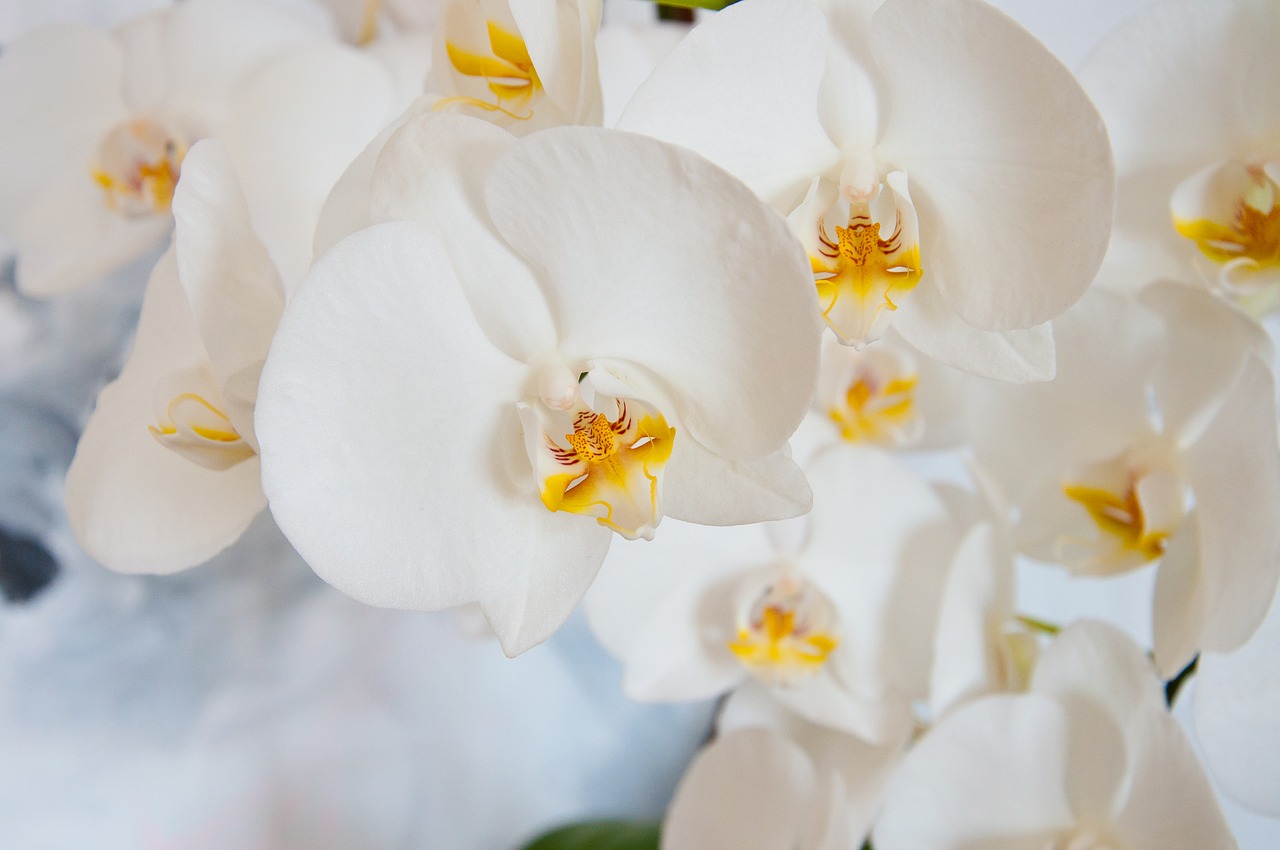
Orchids thrive better and can easily rebloom when their preferred temperature range is met. They are divided into warm, intermediate, or cool growers. It is advisable to choose orchids that best suit your natural environment, or you can provide the right temperature to the orchid in a secluded area.
The warm growers do well in temperatures between 65 and 85F, Intermediate growers between 60 and 80, and cool growers between 50 and 75.
Here are some varieties with their preferred temperature:
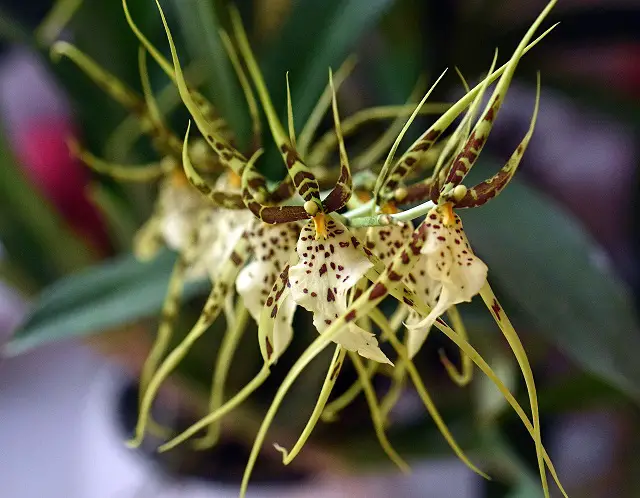
Brassia: intermediate to warm.
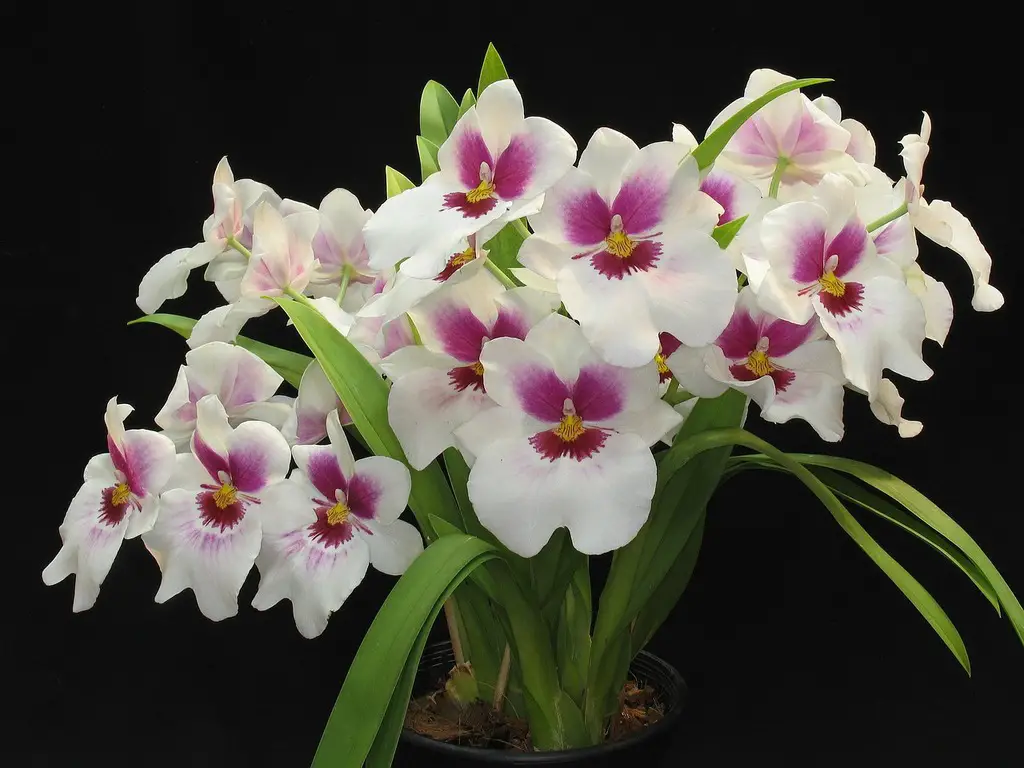
Miltonia, Laelia, and Oncidium: intermediate to warm
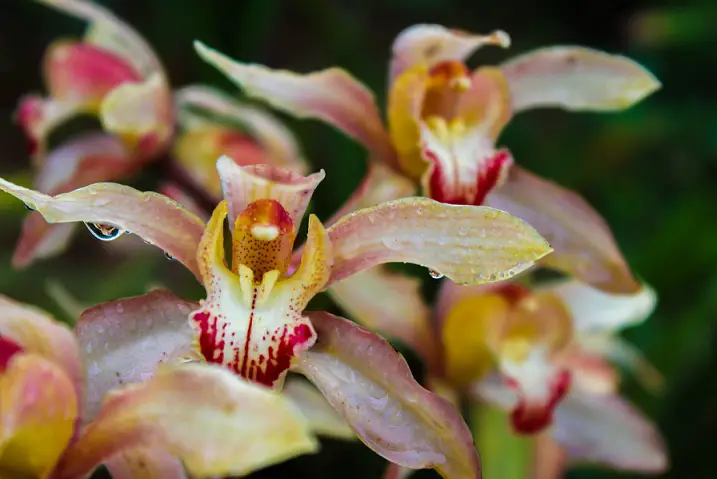
Cymbidium: warm to cool.
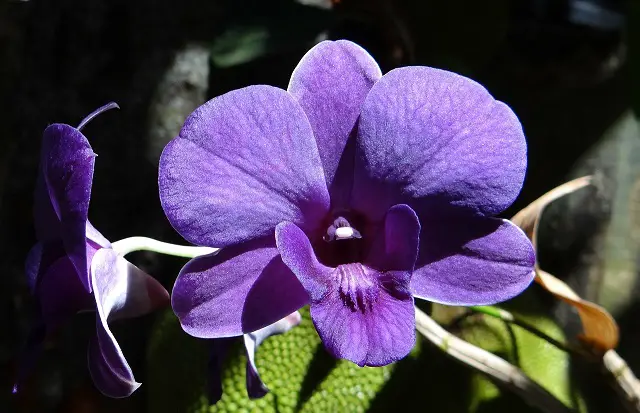
Dendrobium: cool to warm. The cool species require very low temperatures.
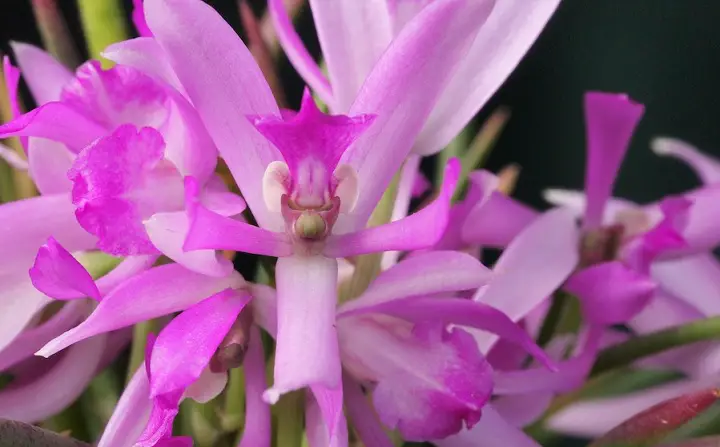
Leptotes: intermediate
2. Water
It would be best if you watered orchids once or twice a week. Their soil should not be left to dry and crack. Having a drip system to water the plant is better as the plant stays watered at all times. You can even use ice blocks during the day to help the plant moderate its temperature.
3. Lighting
Lighting is the most important aspect of the reblooming process. Orchids require indirect lighting to bloom. Too much light leads to black tips on the plant’s leaves. Keeping them by the window that allows indirect light in may be the best. A fluorescent light might work too during the reblooming phase.
4. Fertilizer
The orchid soil should be fertile and able to provide the right minerals for the plant. Mixing it with fertilizer (20-20-20) may fasten the reblooming phase.
Do orchids bloom more than once
Most Orchids bloom once or twice naturally in a year. Each variety has a time of the year when it naturally blooms. In most cases, orchids grow during summer and bloom during fall or winter. However, with the creation of the right conditions, orchids can be encouraged to bloom more.
Orchids are either light or temperature-sensitive. Those that are temperature sensitive often bloom by the natural cooling in fall. This drop-in temperature signals the plant that the growth period is over, and a spike emerges for the blooming season.
These types of orchids, if grown at a constant temperature, lack this signal, and end up not blooming. On the other hand, light-sensitive orchids are signaled by a change in light cycles. They can sense the difference in day and night length and know when to bloom. If they are planted at places with light day and night, their cycle is disrupted, and they end up not blooming.
Reasons Why an Orchid Won’t Bloom
You may take care of your Orchid by the book, but it still fails to rebloom. Or some develop a bud that shrivels and falls off. Orchids being tender species, sometimes fail due to minor things. It is important to pay attention to the following:
Not getting enough light – different species of orchids require a different amount of lighting. Giving the plant more or less of the required light may deter blooming. It is also good to understand your variety better, to know if it is temperature or light-sensitive, as discussed above.
- Varying temperature – Temperature is as important as light. Each variety has different temperature needs. For temperature-sensitive plants, make sure to provide the right amount to enhance blooming. On this, it is best to study more about your variety.
- Proper nutrition – When reblooming, you are forcing the plant to undergo a stage that is not natural. The plant ought to have stored enough nutrients to be used for blooming. The plant has not stored enough, and it is important to provide enough nutrients to support that. Mix fertilizer in the plant’s soil and water it well to enhance the nutrients intake process.
- Enough root space – As the plant grows, it is good to transfer it to a bigger pot to allow more space for the roots. The roots do suffocate when they have no enough space for ventilation. Some Orchids dislike their roots being touched and thus may not bloom for 6 months to a year after repotting.
- Overwatering – when blooming, orchids need sufficient water but not excess. When excess water is provided to the plant, they fail to bloom or sometimes produces a bud that sheds off after some time. You should make sure that the orchid medium or soil is not soggy or too wet. Wrinkled leaves are a sign of less or too much water.
How much sunlight do orchids need?
Each variety of orchid needs different amounts of sunlight. Too much sunlight may cause plants to burn, and too little light will prevent plants from flowering. It is, however, best to always keep them away from direct sunlight. Direct sunlight also causes a huge temperature difference and thus affects the plant. Always consider the plant’s temperature needs to be able to ascertain the needed sunlight.
When do orchids bloom indoors?
Orchids blooming is not affected by it being indoors or outdoors but by the right conditions being met. Once all the conditions that enhance blooming are met, the orchid should be able to bloom. Depending on the variety at hand, the light and temperature provided should prioritize its blooming. With enough care and knowledge, your Orchids can bloom and rebloom indoors.
Can Humidity and Airflow affect reblooming?
Humidity is also very important for Orchids. During reblooming, Phalaenopsis, in particular, requires a lot of humidity to facilitate the process. Sufficient airflow also helps in distributing the humidity around the environment. It has been noted that Phalaenopsis may fail to rebloom if the surrounding humidity is less than required. Ensure that your orchid environment has enough humidity and a window or fan to allow air circulation.
Do sick orchids produce fewer stems?
Stem production does not signify that your orchid is affected by any disease. Orchids have two growth patterns, sympodial and monopodial.
Monopodial
These orchid types grow off a single stem with leaves on either side. The leaves grow to be bigger than the leaves before them. The next bloom spike comes from the base of the leaf’s underside, on both sides of the plant. As the plant grows, the stems diverge, and a new bloom spike comes from them. The series continues as the plant gets stronger.
Sympodial
These orchid types experience multiple growths. They grow more than their previous growth each time. This type of orchid, when young, has stalks called pseudobulbs. The pseudobulbs emerge from the base of previous pseudobulbs during the growth season. Each pseudobulb grows to be larger than the previous one.
Do greenhouses enhance orchids’ reblooming?
Yes, they do. Greenhouses create their own microclimate. In a greenhouse, it is easy to regulate all factors of growth and blooming. By this, you can easily change all factors and always ensure the conditions are directed toward reblooming. It will take the plant some time to rebloom, but you can achieve a more reblooming rate depending on the natural environment.
For a home garden, it is not necessary to build a greenhouse for your orchids. Once you understand your variety, make sure you provide the needed conditions, and it will rebloom.
Are orchids expensive to rebloom?
Expensive is a relative word. The materials needed to rebloom orchids are very few. Apart from the fertilizer needed to supplement the nutrients, the rest are natural conditions. Unless you are determined to build a greenhouse for accurate conditions, the process is easy and cheap compared to buying orchid flowers in the market.
Do orchid’s rebloom affect other plants?
Orchids are originally from the natural rainforest. Some people have considered them parasites due to their nature of attaching their tendons to limbs and trunks of trees. Orchids do not get food from other plants but only seek support. They are thus not parasites. However, while blooming, orchid produces a certain chemical that does affect plants that are budding or in the process of forming fruits.
Orchid buds turning yellow and falling off.
This is known as bud blast. It is a very common phenomenon with orchids. Several factors cause it:
- The plant may be underwatered and thus lacking enough moisture to enhance bud growth. Always water the orchids at equal intervals.
- The temperature difference in the plant’s environment is too wide. This may be due to very hot days and very cold nights. It is good to move the plant to a cooler place or direct sunlight to reduce the temperature difference.
- Chemical fumes sometimes do affect orchids. These include paint fumes, natural gas leaks, or smoke from burnt chemicals. It is good to ensure that chemicals are not leaked close to your orchid plants.
Is it important to trim orchids after blooming?
This is a very common question among orchid farmers. It depends on the variety of orchids that you have. Generally, after blooming, one can remove the spike with a sharp knife. If the spike is not removed, it usually dries up, turns black, and falls off. However, some orchids rebloom from the same spike more than once.
Sometimes, it is okay to cut off the spike halfway from the stem, which allows it to grow with vigor and produce more flowers the next time it blooms. It usually takes around 9 – 120 days for the new spike to reappear for Phalaenopsis.
My orchid has black spots on the leaves.
This is known as leaf rot caused by Cercospora of Colletotrichum fungi. It starts with yellow spots that gradually turn brown or black in color. This should, however, not be confused by small black spots caused by the sun on some varieties.
The best treatment is to use bactericide/fungicide spray such as Phyton 27. It would help if you sprayed it in 10 days as the plants are checked before each spray time. The spots on healed leaves should start to turn brown in color. Stop spraying when the plant shows healing signs. In extremely rot leaves, remove them using a sterilized tool to avoid spreading them to other plants.
Conclusion
As it turns out, growing orchids is fun and full of different experiences. Reblooming orchids is not a hard process once you know how to care for the plant. The main tip is to know your plant variety and the condition that are optimum for it. There are light-sensitive and temperature-sensitive varieties of orchids. Determining which one your variety is, is the key to reblooming. It is time you applied this knowledge to your garden and experienced the reblooming process.
Read also: How To Get Gerbera Daisies To Bloom.
Did you find this post useful? Would you like to get back to it later? Save THIS PIN below to your gardening, flowers, or house plant board on Pinterest! Thanks 🙂


